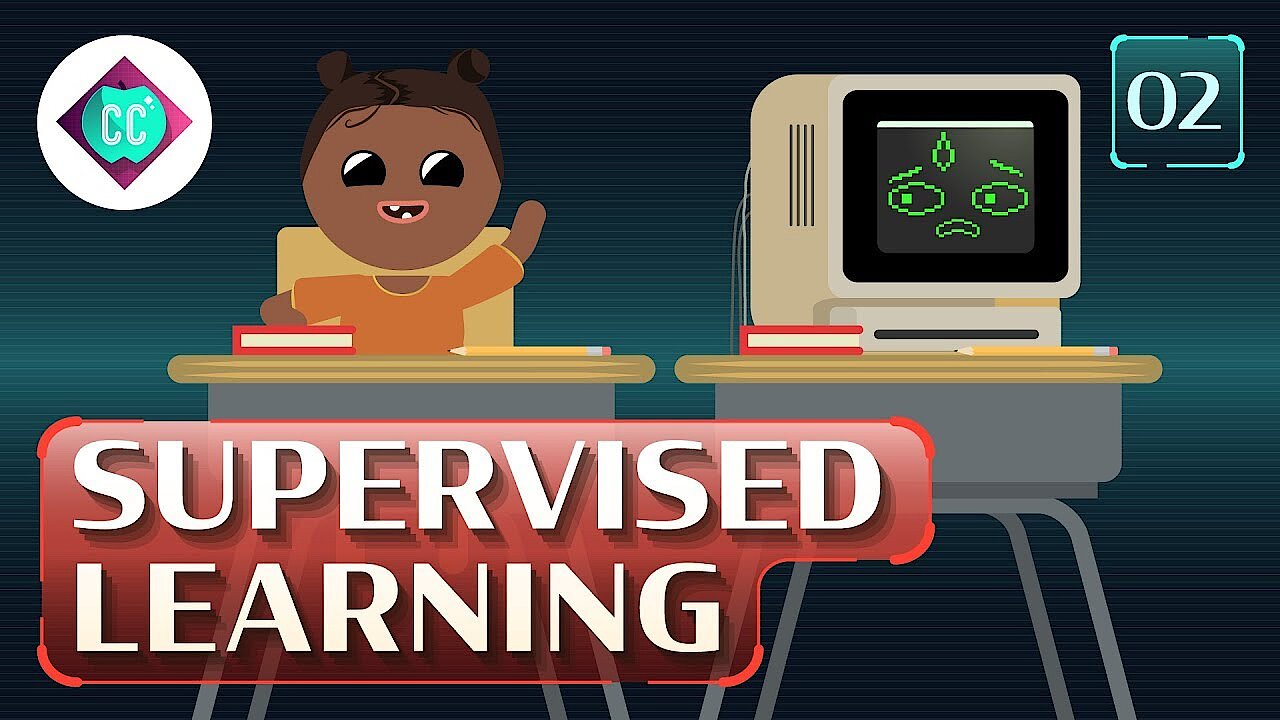What is supervised learning?
In supervised learning, an AI model is trained on labelled data, allowing it to make predictions or classifications of new, unknown data. Keep reading to learn more about supervised machine learning.
What is supervised learning?
Machine learning is about computers recognising patterns and learning rules. Instead of just being able to react to human input, machines should also be able to make decisions independently based on the rules they’ve learned. For example, algorithms can learn to correctly identify spam or to understand the content of an image. To achieve this, developers use a range of training methods, with supervised learning being one of the most common ones, if not the most common.
In supervised machine learning, developers provide algorithms with a prepared dataset that serves as a training source. Since the results are already known, the algorithm’s job is just to recognise the pattern: Why does this information belong to category A and not to category B?
Supervised learning is used for algorithms that are supposed to categorise types of data (e.g., photos, handwriting, language). Another common use case for supervised learning is regression problems. With these types of problems, algorithms are supposed to make predictions, such as price trends or an increase in sales.
Semi-supervised learning is a hybrid form. When using this learning method, only part of the data set is labelled. The rest remains uncategorised and should be assigned to categories by the algorithms. An example of this is Facebook’s facial recognition function. All you need to do is tag a few photos with the names of friends, and the algorithm will find other photos with them on its own.
How does it work?
Suppose you want to train algorithms to be able to distinguish cat images from dog images. To do this, you would prepare a massive dataset. It would contain images that have already been labelled (i.e., identified as belonging to a specific category). You could use three different groups for this: dogs, cats and others.
It’s important that the dataset also contains as much variation as possible. If you only have images of black cats in your training dataset, the algorithm will assume that all cats have black fur. So, the data set should reflect the range of variation that exists as much as possible.
When being trained, the algorithm first receives the content (uncategorised). It makes a decision independently, and then compares its decision with the output provided by the developers. The system checks its result against the correct one and draws conclusions from this that affect the subsequent assessments it makes during the training. The training continues until the machine’s assessments come close enough to the correct results.
 To display this video, third-party cookies are required. You can access and change your cookie settings here.
To display this video, third-party cookies are required. You can access and change your cookie settings here. What are the advantages and disadvantages of supervised learning?
Generally, when using supervised learning, you can train algorithms so that they are perfectly prepared for the task that they should perform. In contrast to unsupervised learning, where algorithms function on their own and a lot is left unclear, in supervised learning, what the machine does is precisely defined. However, this can also present a disadvantage, as the trained algorithms only work within the restrictions that have been placed on them.
While supervised learning may not be the best choice for creative problem-solving on the part of machines, it’s ideal for categorisation and regression problems. Since you have complete control over the training material, all you need is enough input and time to correctly adapt the algorithms. With this approach, an extensive dataset is needed, and each element has to be labelled, which also means a significant amount of work for the developers training the models.
- Get online faster with AI tools
- Fast-track growth with AI marketing
- Save time, maximise results
How does it differ from unsupervised learning und semi-supervised learning?
In addition to supervised learning, there’s also unsupervised learning and semi-supervised learning. Below, we’ll cover the key differences between supervised learning and these other types of learning methods.
Supervised Learning vs unsupervised Learning
In supervised learning, datasets include inputs along with a defined output. In unsupervised learning, only the inputs are defined. Unlike supervised learning, the aim of unsupervised learning is to identify unknown patterns and structures within data. This makes unsupervised learning more suitable for tasks like clustering (grouping data points without categorising them).
Since there aren’t output labels in unsupervised learning datasets, the prep work for developers is significantly lower. However, this also means that both the training process and final results are much less transparent. This can make it challenging to assess the model’s performance and accuracy.
Supervised learning v. semi-supervised learning
A major drawback of supervised learning is the significant time investment required from developers to label the data. Semi-supervised learning uses both labelled and unlabelled data to help counteract this drawback. The model initially learns from labelled data and then improves itself by recognising patterns and structures within the unlabelled data.
The main advantage of semi-supervised learning is efficiency: fewer data points need to be labelled, and the approach can still achieve relatively high accuracy. Similar to supervised learning, semi-supervised learning can also be used for classification tasks. This approach, however, aims to optimise the training workload by reducing the amount of labelled data needed. Managing the model’s complexity and finding the right balance between labelled and unlabelled data can be challenging though.
What are other machine learning methods?
Supervised, unsupervised and semi-supervised learning aren’t the only machine learning methods used to train artificial intelligence.
Deep learning is a learning method where trained models continuously learn and adapt themselves based on the input they receive. These models are based on neural networks, which are modelled after the human brain.
Another method is reinforcement learning, where a computer learns to determine which decisions are best through trial and error. The goal here is for the computer to develop a strategy (referred to as a policy) for consistently making the best decisions so that it is able to achieve the best possible outcomes. A good example is an AI system learning to play a video game. The system receives feedback on each decision it makes from its training environment and develops game strategies accordingly.
Supervised learning is a very popular method for training algorithms because developers retain complete control. While the results in other training variants are often unclear, in supervised machine learning, it’s clear from the outset what the outcome of the learning process should be. However, this approach entails a great deal of work for the trainers.

